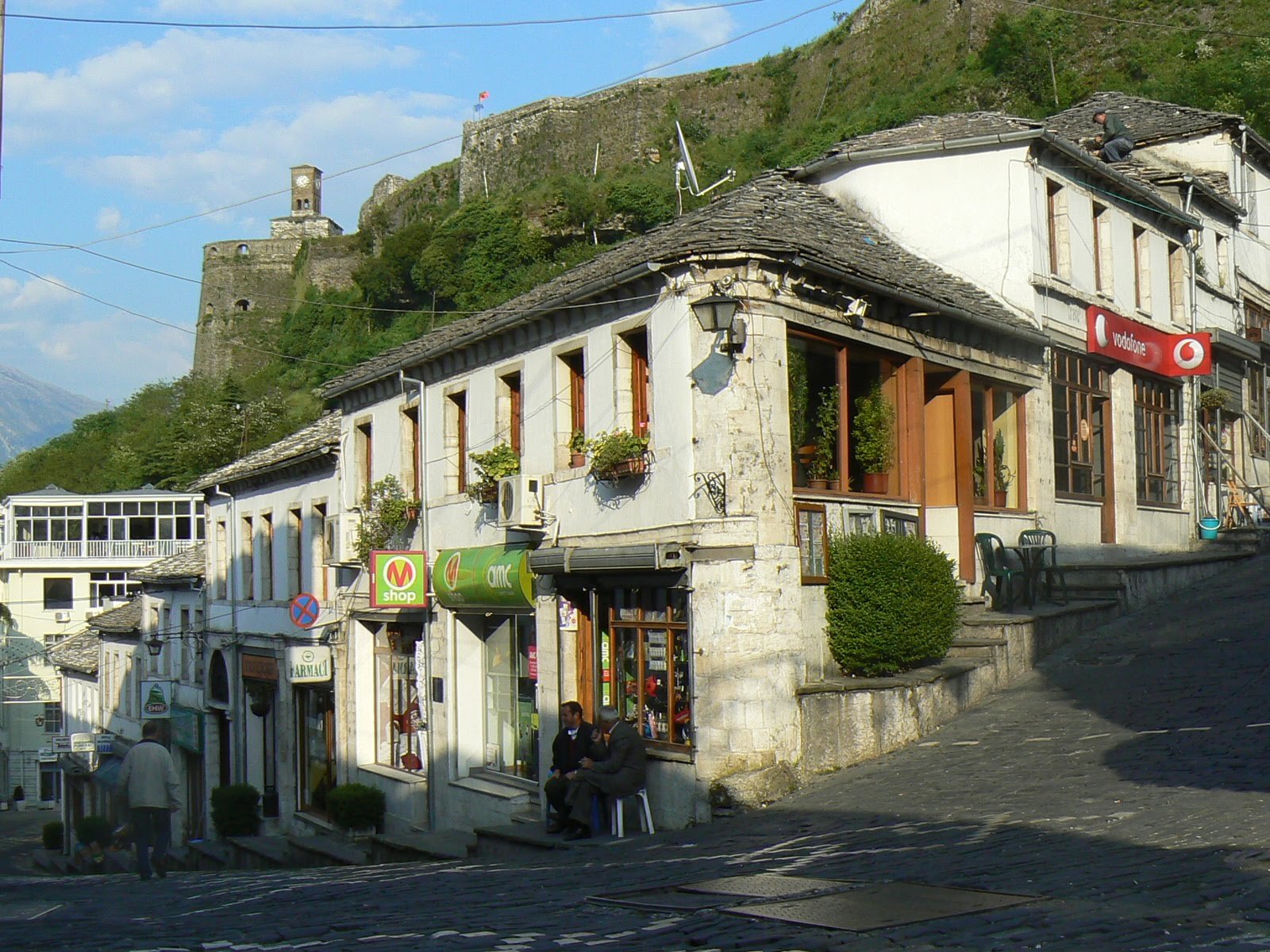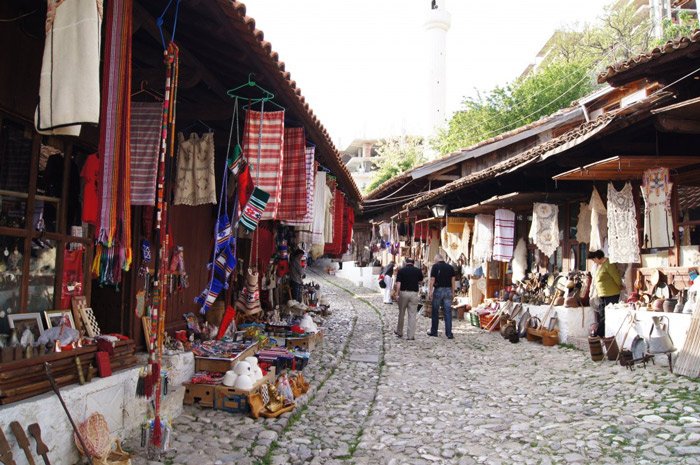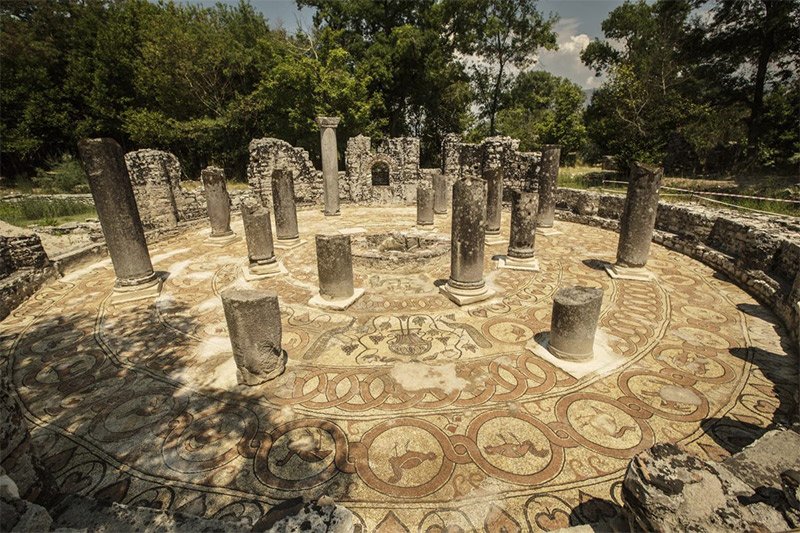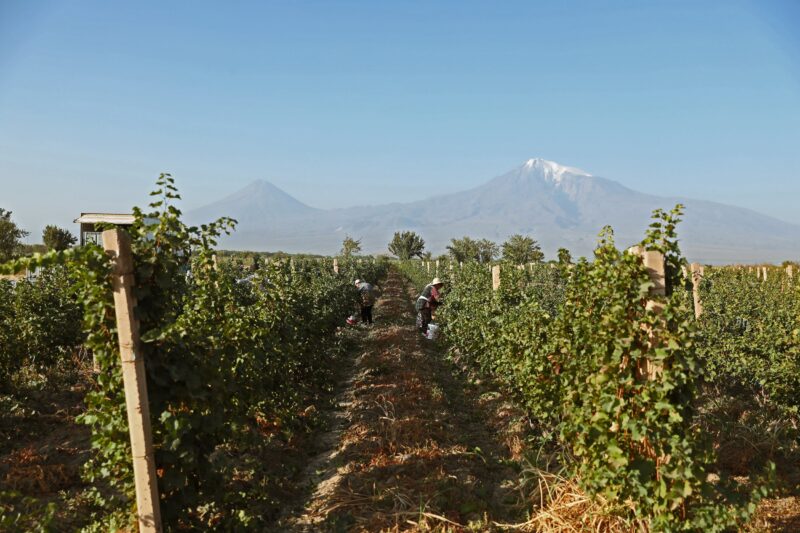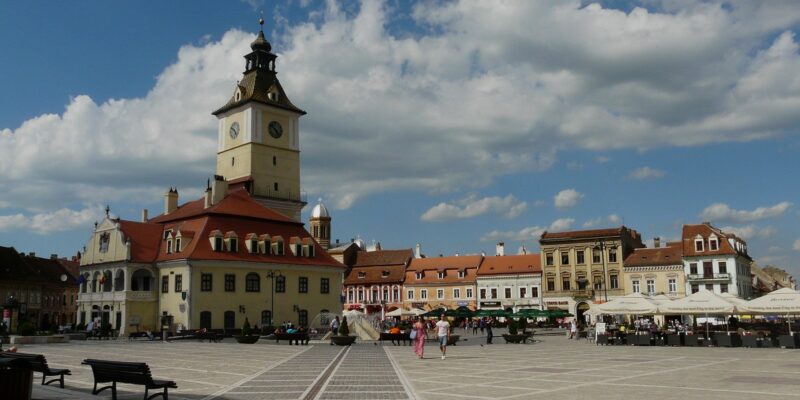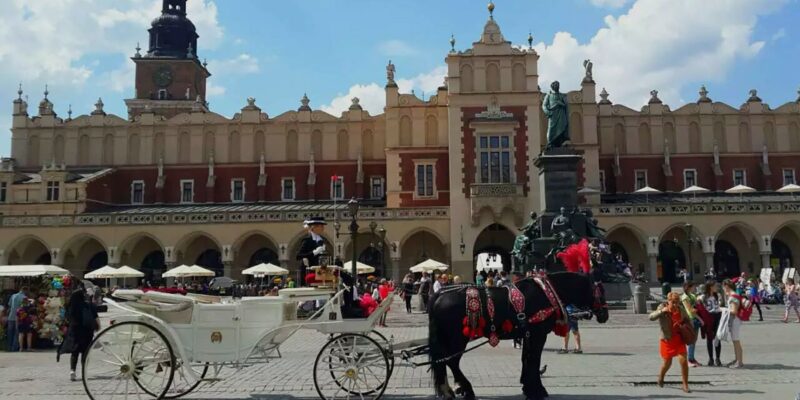| Destination | Tour Code | Start | End | Trip Status | Pricing Per person | |
|---|---|---|---|---|---|---|
| Albania, Kosovo and Macedonia – Hidden Europe | ALD/040925 |
Sep 04, 2025 Thursday |
Sep 19, 2025 Friday |
Guaranteed |
£2,490.00
Single Room Supplement: £285.00
|
Book Now |
| Albania, Kosovo and Macedonia – Hidden Europe | ALD/300426 |
Apr 30, 2026 Thursday |
May 15, 2026 Friday |
Guaranteed |
£2,995.00
Single Room Supplement: £285.00
|
Book Now |
| Albania, Kosovo and Macedonia – Hidden Europe | ALD/070526 |
May 07, 2026 Thursday |
May 22, 2026 Friday |
Guaranteed |
£2,995.00
Single Room Supplement: £285.00
|
Book Now |
| Albania, Kosovo and Macedonia – Hidden Europe | ALD/030926 |
Sep 03, 2026 Thursday |
Sep 18, 2026 Friday |
Guaranteed |
£2,995.00
Single Room Supplement: £285.00
|
Book Now |
| Albania, Kosovo and Macedonia – Hidden Europe | ALD/011026 |
Oct 01, 2026 Thursday |
Oct 16, 2026 Friday |
Guaranteed |
£2,995.00
Single Room Supplement: £285.00
|
Book Now |
| Albania, Kosovo and Macedonia – Hidden Europe | ALD/290427 |
Apr 29, 2027 Thursday |
May 14, 2027 Friday |
Guaranteed |
£2,995.00
Single Room Supplement: £285.00
|
Book Now |
| Albania, Kosovo and Macedonia – Hidden Europe | ALD/020927 |
Sep 02, 2027 Thursday |
Sep 17, 2027 Friday |
Guaranteed |
£2,995.00
Single Room Supplement: £285.00
|
Book Now |
Hidden Europe
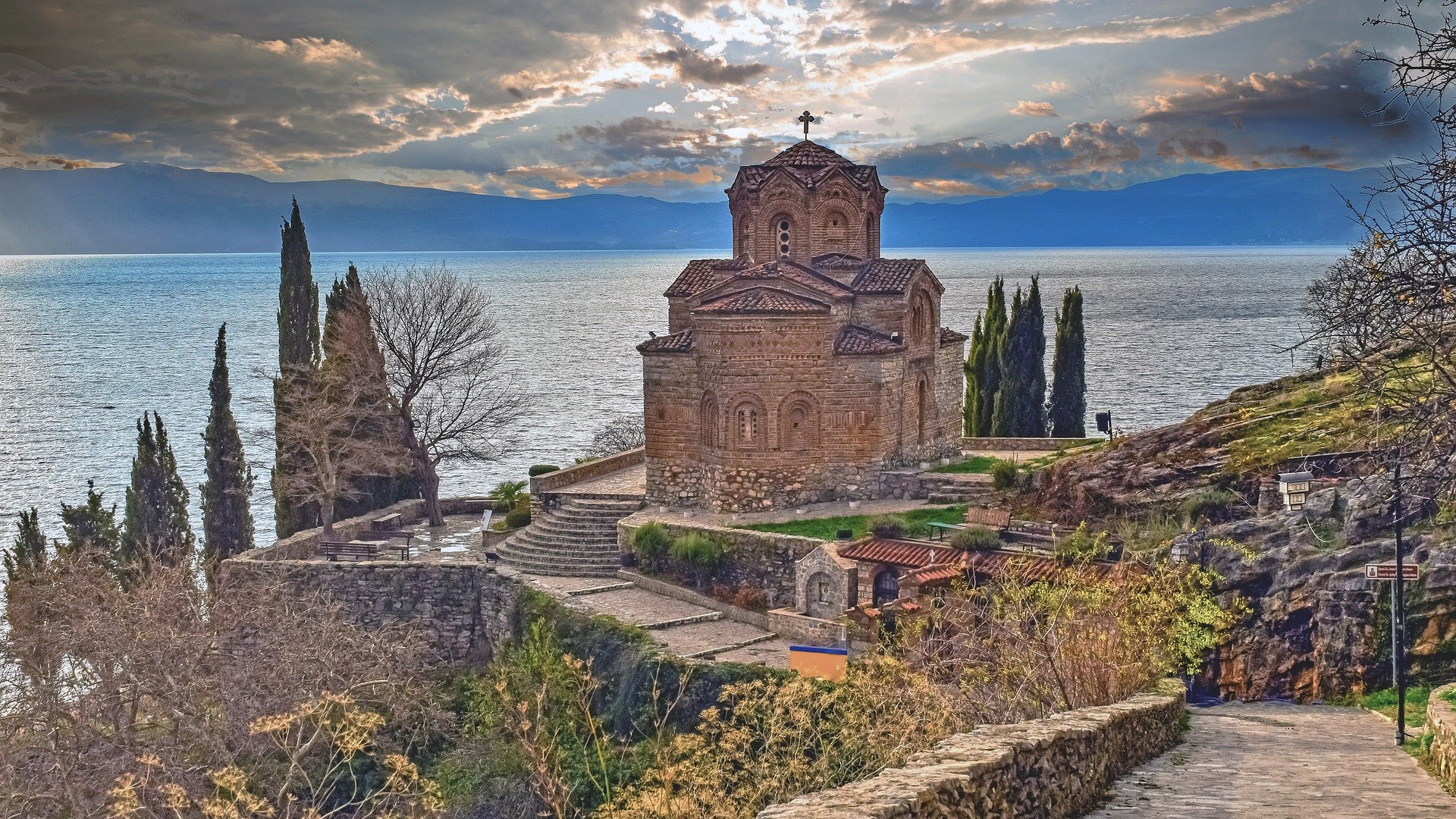
Tucked away in a little visited corner of Europe lie Albania, Kosovo and North Macedonia, three charming and delightful countries that few people know much about. For years Albania was a closed society, ruled by the iron fist of Communism, but since the end of the Cold War it has been showing curious travellers its many charms, while as Europe’s newest state, Kosovo is best known for its terrible war that it suffered in the last years of the 20th century – not the best image for outsiders to have of it. The location of these countries between some of Europe’s most important empires has left them well endowed with a wealth of attractions from the Greek, Roman and Ottoman eras. The region is home to a wealth of old Ottoman architecture which sits side by side with elaborately decorated Orthodox churches and from more recent times the civic buildings of Communist Yugoslavia, as well as impressive Roman ruins and well-preserved historic towns. This part of Europe is also blessed with incredible scenery with imposing mountains, pristine lakes and traditional villages tucked away in pretty valleys. But as with many countries it is the people who leave perhaps the most lasting impression – having come through recent strife there is an overwhelming sense of optimism about the people that cannot fail to raise your spirits.
Arrival and departure transfers
Overland transport throughout with professional driver
All accommodation
Services of English-speaking guide / tour leader
Meals as listed, B – Breakfast, L – Lunch, D – Dinner
Entrance fees for sites listed as part of the itinerary
International flights (, contact , us, for expert advice and a quote)
Any airport taxes
Travel Insurance
Visa – when required
Drinks
Items of personal nature
Tips (Discretionary)
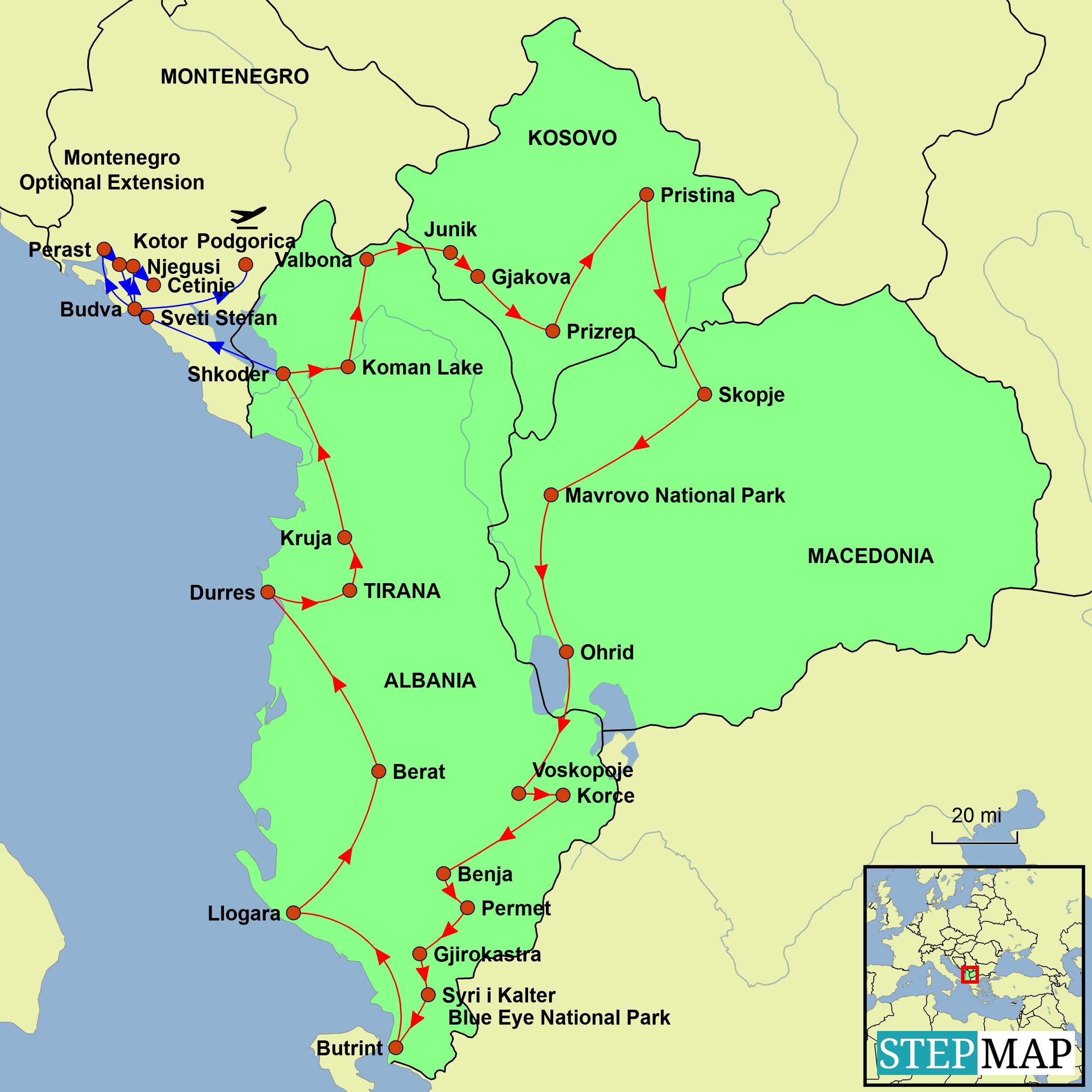
The “Albania Explorer” tour is a 9-day small group journey that delves into Albania’s rich history, diverse landscapes, and authentic culture. Starting in Tirana, the capital city, the itinerary includes visits to Shkoder, a city steeped in Illyrian heritage, and Kruja, renowned for its medieval castle and the Skanderbeg Museum, dedicated to Albania’s national hero. The tour continues to Berat, a UNESCO World Heritage Site famed for its Ottoman-era architecture, and Gjirokastra, another UNESCO-listed town known for its well-preserved stone houses and ancient fortress. Travellers also explore the archaeological site of Butrint, a UNESCO World Heritage Site that showcases layers of Greek, Roman, and Byzantine history. The journey concludes with a scenic drive through the Albanian Riviera, offering breathtaking views of the Ionian Sea. Throughout the tour, participants experience Albania’s diverse landscapes, from rugged mountains to pristine beaches, and engage with local communities to gain insights into the country’s evolving cultural identity. The itinerary is designed for those seeking an immersive experience in a lesser-known European destination, combining historical exploration with natural beauty. For those interested in extending their journey, an optional extension to North Macedonia is available, featuring the picturesque Lake Ohrid and the historic city of Skopje.
Shkoder
A city with deep Illyrian roots, Shkoder is known for its historical sites and vibrant cultural atmosphere, offering insights into Albania's ancient heritage.
Kruja Castle
This medieval fortress, home to the Skanderbeg Museum, celebrates Albania's national hero and provides panoramic views of the surrounding landscape.
Berat
Known as the "City of a Thousand Windows," Berat is a UNESCO World Heritage Site, famous for its well-preserved Ottoman architecture and charming old town.
Gjirokastra
A UNESCO-listed town, Gjirokastra is renowned for its traditional stone houses, ancient fortress, and its role in Albania’s Ottoman history.
Butrint Archaeological Site
This UNESCO World Heritage Site is an exceptional collection of ancient ruins, showcasing Greek, Roman, and Byzantine influences in a beautifully preserved setting.
Download the Information Pack
To download the tour full dossier, which includes a complete day-by-day itinerary breakdown and detailed tour information, fill in the details below.

Foreign Office Travel Warnings Before booking your tour, please familiarise yourself with the country specific information provided by the UK’s Foreign, Commonwealth and Development Office (FCDO) – www.gov.uk/foreign-travel-advice. This includes important information such as latest immigration requirements, and details of any travel advisories. We constantly monitor the advice posted by the FCDO. In particular we will always advise clients of any travel warnings. At present there are no warnings against travel to the parts of Albania, Kosovo and North Macedonia that we visit on this tour. Please feel free to contact us should you have any specific concerns or would like to know in detail what measures are being taken to ensure visits remain trouble free and without incident. It should be noted that this information applies to British citizens. Other nationals are asked to check the current position of their respective government. Visa Information At the time of writing British, US and Australian nationals do not require a visa for a tourist visit to Albania, Kosovo and North Macedonia. For further details please visit the applicable website shown below. British Nationals – www.gov.uk/foreign-travel-advice US Nationals – travel.state.gov/content/travel/en/international-travel.html Australian Nationals – www.smartraveller.gov.au Other nationals should check the latest requirements with the authorities in their home country, or with the destination’s nearest embassy or consulate. Should you require any documentation to support a visa application, such as a letter of invitation, upon request this will be provided by Undiscovered Destinations after receipt of your balance payment. As it is the travellers’ responsibility to ensure that they meet all entry requirements it is essential that you check the rules and any other conditions at the time of booking and again when making your balance payment. In addition, we would strongly advise that you make a final check around two weeks before your arrival. This is important as requirements can change at short notice. Undiscovered Destinations, when possible, will provide guidance about entry rules, but in the first instance please contact the relevant authorities, including the applicable embassy or consulate for assistance. Passports It is your responsibility to ensure that you are in possession of a full passport, valid for at least six months after the date of return to your country. We strongly advise that your passport contains a minimum of two blank pages, as this may be a requirement of the local immigration authorities. In addition, certain countries will stipulate that the two blank pages are opposite each other. If you are unable to meet these requirements, you may be refused boarding by your airline or denied entry by the immigration authorities. For specific information about the requirements for your destination please check with the country’s embassy or consulate. Alternatively, UK citizens can visit www.gov.uk/foreign-travel-advice. Vaccinations & Protection As with travel to most parts of Eastern Europe, we strongly recommend that you contact your doctor’s surgery or a specialist travel clinic for up-to-date information, advice, and the necessary vaccinations. For a visit of less than one month, you maybe advised to have immunisations against the following: Diphtheria and Tetanus, Hepatitis A, Typhoid, Meningitis. The legal status and regulation of some medicines prescribed or purchased in your home country can be different in other countries. If you’re travelling with prescription or over-the-counter medicine, read this guidance from NaTHNaC on best practice when travelling with medicines. For further information on the legal status of a specific medicine, you’ll need to contact the embassy, high commission or consulate of the country or territory you’re travelling to. Travel Insurance It is a condition of booking with Undiscovered Destinations that you have adequate valid travel insurance. It is your responsibility to arrange appropriate travel insurance and ensure you have read and understood the full terms and conditions of your travel insurance policy to ensure that you are covered for all activities you intend to undertake whilst on the tour, including all optional activities. Your Insurance Policy must fully cover you for medical expenses (including cover for Covid-19 conditions) and emergency repatriation to your home country and be valid for the entire duration of your holiday. Local Conditions When travelling to our destinations, many of which are underdeveloped and untouristed by mainstream tourism, a good deal of patience and a sense of humour is an important attribute. This will help you to cope with problems such as ageing or poor infrastructure and when maintenance may not be as high as we would always like. The choice of appropriate accommodation in some towns and cities (particularly the smaller places) can be limited, and standards of both service and maintenance can be less than polished. Guides and other service providers in some of our destinations do not always have the decades of collective practice and experience that their counterparts in more developed countries can draw upon. Although we will always try and resolve any issues as quickly as possible, on occasions there may be some shortcomings which no matter how hard we try will be unavoidable.
